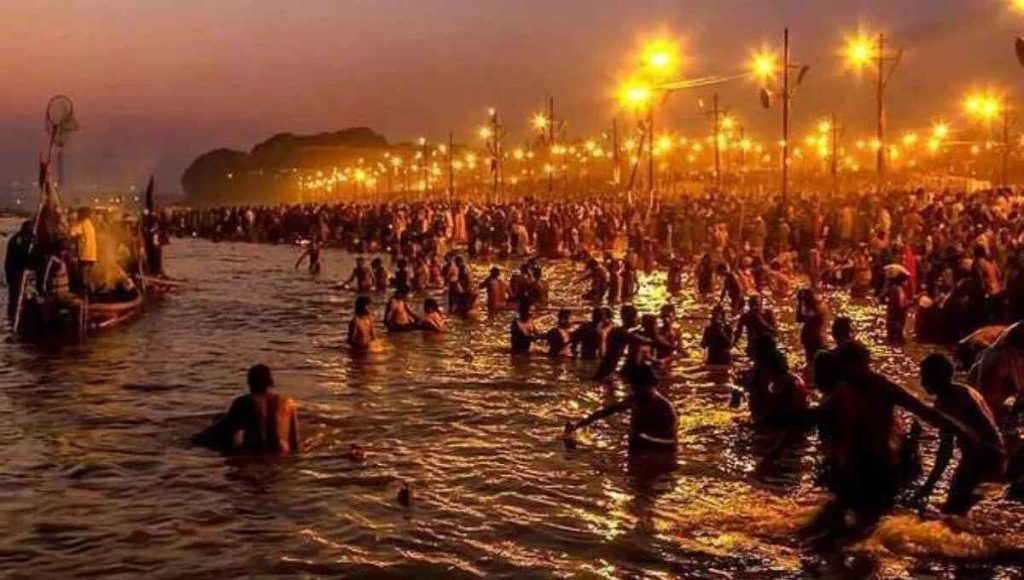As the Makar Sankranti bathing festival marked its presence on 15th January, Monday, it also heralded the beginning of the month-long Kalpvas during Magh Mela 2024 on the sandy banks of Sangam. The Sangam is the place where the Ganga, Yamuna, and Saraswati rivers meet. Thus, it attracts millions of people around the world. The event promises an immersive spiritual journey. Devotees come for holy dips, believing in purification and salvation. Magh Mela in Prayagraj is not just a religious gathering; it’s a cultural spectacle, showcasing rituals, prayers, and discourses by saints.
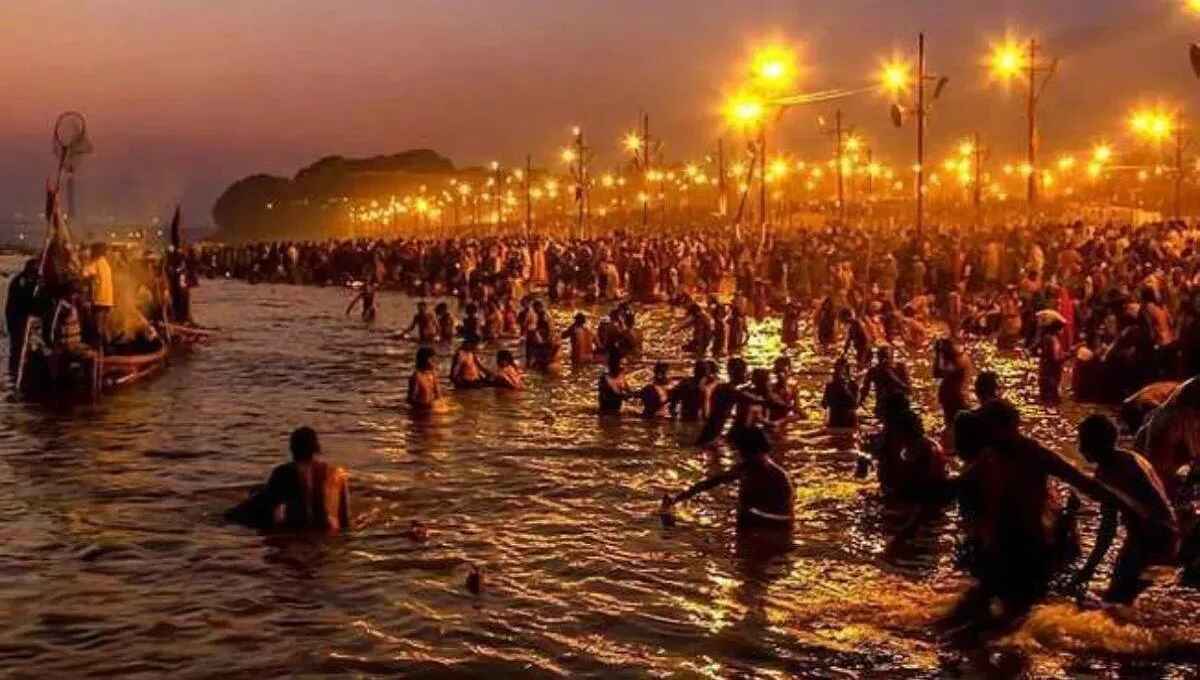
The 2024 edition will continue this tradition, offering a unique blend of devotion, culture, and community. This significant start in the tent city saw thousands of pilgrims setting up camp, embarking on a spiritual journey that concludes on March 8 with the Mahashivratri festival. It’s a must-visit for those seeking spiritual enlightenment and a glimpse into India’s rich cultural tapestry.
The Historical Essence of Magh Mela
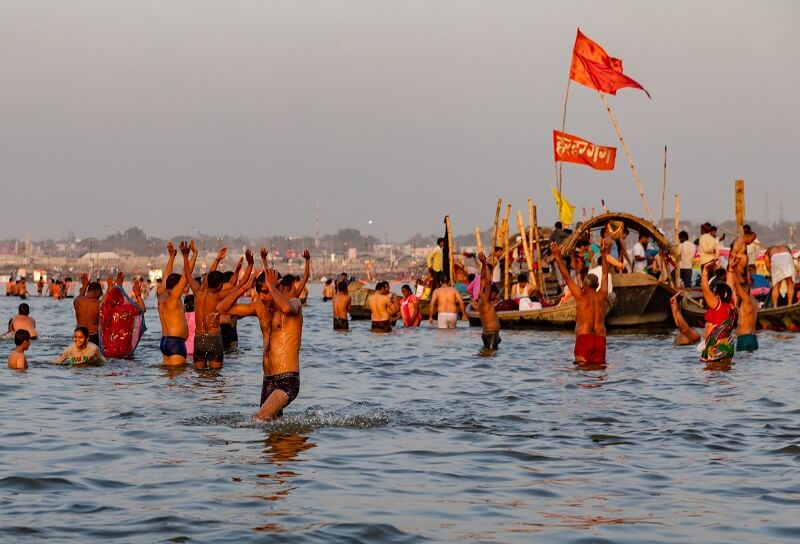
The Magh Mela, celebrated in Prayagraj(Allahabad) at the Triveni Sangam, venerates Lord Brahma, “The Creator,” for birthing the universe. This is a Hindu festival, rich in yajnas, prayers, and rituals. It honors the universe’s inception. It makes Prayagraj the paramount pilgrimage site, Tirtha Raj. Spanning 54 days, known as Kalpvas, this period symbolizes the cumulative years of the four yugas—Satyug, Treta, Dwapar, and Kalyug. Kalpvasis, the devout participants, engage in these practices with the belief that such dedication can cleanse past sins and offer an escape from the cycles of rebirth and karma.
Referenced in the Mahabharata and several Puranas, Magh Mela’s essence is rooted in the pursuit of atonement and spiritual liberation. Bathing in the Sangam during this time is considered a path to moksha, breaking free from the cycle of rebirth. The festival highlights are Makar Sankranti and Mauni Amavasya. They draw many devotees for the sanctifying dips, embodying the festival’s deep spiritual significance and its role in facilitating divine redemption.
The Significance of Magh Mela for Devotees and Sadhvis
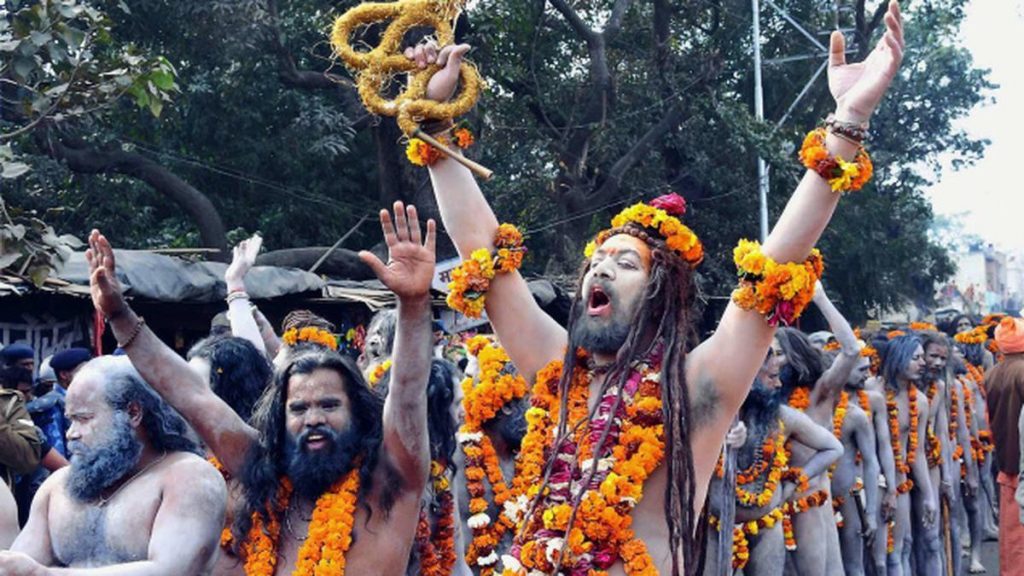
The Magh Mela, with its sacred rituals and vibrant atmosphere, holds profound significance for both people and sadhvis on their spiritual journey. Central to this is the Holysnan. It is a pivotal act of faith where millions immerse themselves in the holy waters at the Sangam. This ritual is believed to purify the soul and wash away sins. It is a powerful moment of connection between the devotee and the divine. For many, it represents a symbolic rebirth free from past burdens.
Sadhvis, female ascetics devoted to a life of spiritual pursuit, find in Magh Mela a fertile ground for deep meditation and ascetic practices. It’s a time for them to engage with the wider community, impart wisdom, and lead by example in performing sacred rites and austerities. The gathering serves as a reminder of their commitment to spiritual growth and the path of enlightenment.
The Ganga Aarti, an enchanting ceremony filled with chants, lamps, and devotion, further elevates the spiritual ambiance of the Mela. You can witness the aarti at dusk by the riverbank. It is certainly a mesmerizing experience, reinforcing the bond between the individual and the universe. This is a moment that encapsulates the essence of the Magh Mela—a celebration of faith, a journey towards higher consciousness, and a collective quest for divine blessings.
For both pilgrims and sadhvis, the Magh Mela is more than an event; it’s a journey of self-discovery, a pathway to spiritual awakening, and a chance to experience the divine in the bustling world.
Kalpvas: A Month of Spiritual Retreat and Renewal
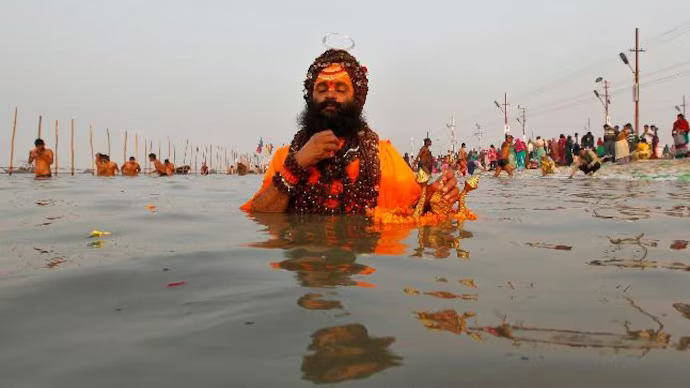
Kalpvas is an integral tradition of the Magh Mela. It involves devotees living near the Sangam for an entire month. The devotees dedicate themselves to spirituality. This period is marked by austerity, daily rituals, and meditation. It reflects a deep commitment to personal growth and divine connection. Observers adhere to a disciplined lifestyle. They take holy baths in the early morning, participate in prayers, and consume simple food. The spiritual benefits of observing Kalpvas are profound. It’s believed to purify the soul, foster self-discipline, and bring the devotee closer to moksha, or liberation. Kalpvas serves as a retreat from worldly distractions. It offers a unique opportunity for introspection, spiritual awakening, and attaining inner peace.
Also Read: Famous Lord Shiva Temples In India
Important Dates of Magh Mela 2024 HolySnan(bath)
First Snan of the Magh Mela: Makar Sankranti on January 15, 2024
Second Snan: January 25, 2024, on the full moon of Pausha, beginning of Kalpavas
Third Snan : on February 9, 2024, on Mauni Amavasya
Fourth Snan: Basant Panchami on February 14, 2024
Fifth Snan: Magha Purnima on February 24, 2024
Final Snan: Mahashivratri on March 8, 2024
Accommodation for Magh Mela
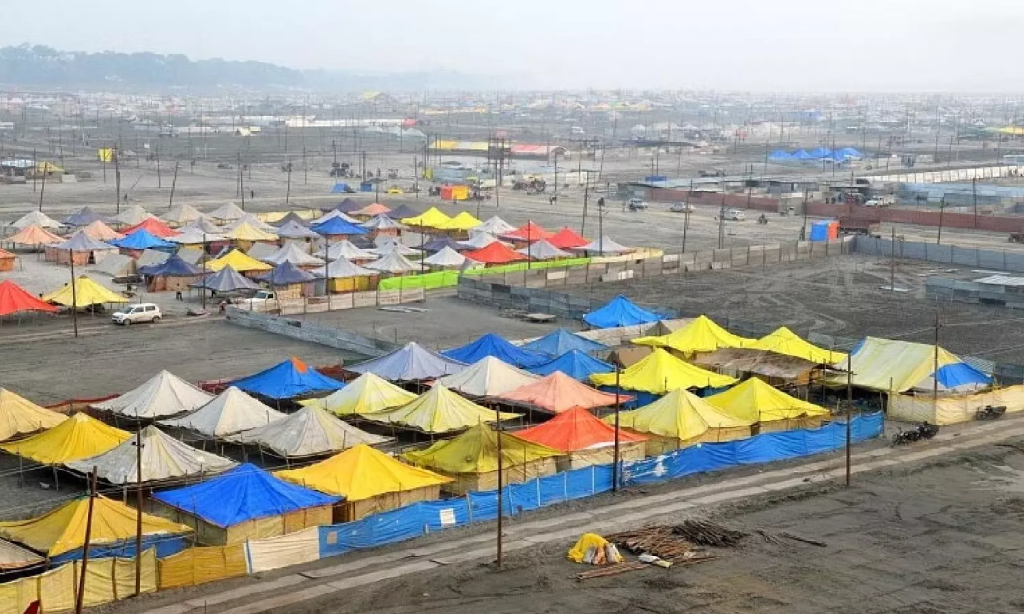
The Magh Mela 2024 festival in India has temporary lodging near the Ganga River. Pilgrims can choose from tents and basic rooms. These options offer a place to rest during the event. Affordable lodging options are available near the main event grounds, making it convenient for pilgrims.
How to reach at Magh Mela
By Air: The nearest airport is the Bamrauli Airport in Prayagraj. From there, you can hire a vehicle to reach the Magh Mela site.
By Train: Prayagraj Junction is the main railway station of the city. It is well-connected to major cities across India. You can take a train to Prayagraj and then use local transportation options to reach the Magh Mela site.
By Bus: Prayagraj is well-connected by bus services from major cities in Uttar Pradesh and nearby states. You can take a bus to Prayagraj and then use local transportation options to reach the Magh Mela site.
The bottom line,
Magh Mela 2024 in Prayagraj stands as a testament to timeless faith and spiritual devotion, wrapping up on March 8. This sacred gathering on the banks of Sangam offers a unique blend of spiritual awakening, cultural richness, and communal harmony. The event combines the profound experiences and traditions of Kalpvas, the holy snans, and the vibrant Ganga Aarti. Thus, the Magh Mela is more than an event; it’s a spiritual journey. Don’t miss the opportunity to partake in this divine congregation. Mark the Magh Mela dates in your calendar and experience the spiritual renaissance in Prayagraj. Join in this celestial celebration.
F.A.Qs
The origins of Magh Mela are deeply rooted in Hindu mythology and scriptures, making it difficult to attribute its start to a single individual. The Magha Mela, referenced in the Mahabharata and major Puranas, holds significance in Sikhism too. Guru Amar Das (1552–1574 CE) recognized it, alongside Diwali and Vaisakhi, as a key Sikh community festival. Known as Maghi, it commemorates the forty martyrs from a 1705 CE Muslim-Sikh war during Guru Gobind Singh’s era.
Yes, Magh Mela occurs annually at the Sangam in Prayagraj, Uttar Pradesh, India. It takes place during the Hindu month of Magh, falling between January and February. This event draws devotees from across the globe for holy dips, spiritual practices, and to partake in the numerous religious ceremonies and discourses held during this period.
The main difference between Kumbh Mela and Magh Mela lies in their scale and occurrence. Kumbh Mela is a larger event that occurs every three years in a rotating cycle among four locations, including Prayagraj. It is celebrated every 12 years as the Maha Kumbh Mela. On the other hand, Magh Mela is an annual event, primarily held in Prayagraj. It is considered a smaller version of the Kumbh Mela.
In 2024, Magh Mela is held in Prayagraj on the sandy banks of Sangam – the confluence of the Ganges, Yamuna, and the mythical Saraswati rivers. This location is rich in spiritual significance. It attracts millions of pilgrims seeking purification and enlightenment through the sacred act of taking a dip in the holy waters.
